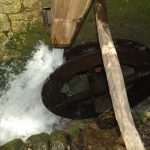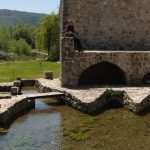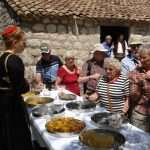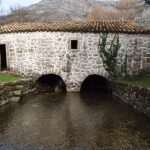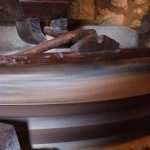In the early 15th century, the area of the village and the river of Ljuta in Konavle was divided between the two Bosnian noblemen, Radoslav Pavlović and Sandalj Hranić. When Dubrovnik Republic acquired Konavle, in 1419 and 1426 respectively, there were four mills by the Ljuta River. The Dubrovnik Government precisely defined the usage of mills: the concession of mills was given for one year; the concession holders were in charge of one mill, exceptionally two; the price of grinding grain was determined as well; everyone who brought grain was entitled to collect all the flour falling around the wheels during grinding…
After establishing its government in Konavle firmly, Dubrovnik Republic intensively worked on developing agriculture, which consequently resulted in building new mills. Mills were divided in Gornji mlini (Upper Mills), where the channels bringing water from the river to the mills were up to 50 metres long because of the steep terrain, and Donji mlini (Lower Mills), where the channels were hundreds of metres long because of the flat terrain of the valley; their construction was completed by the 16th century.
After the fall of Dubrovnik Republic in the very beginning of the 19th century, they all became private property. The second half of the same century saw the construction of water mills for making olive oil and the ones for fulling to thicken woollen cloth by matting the fibres together to give it strength and increase waterproofing (felting).
By 1941, 11 mills producing flour and 3 mills making olive oil were still operational, but after WWII the fast industrialization reduced grain production and the mills fell into disuse. Today, there are 2 flour mills and 1 fulling mill restored and used mainly in tourist purposes.



